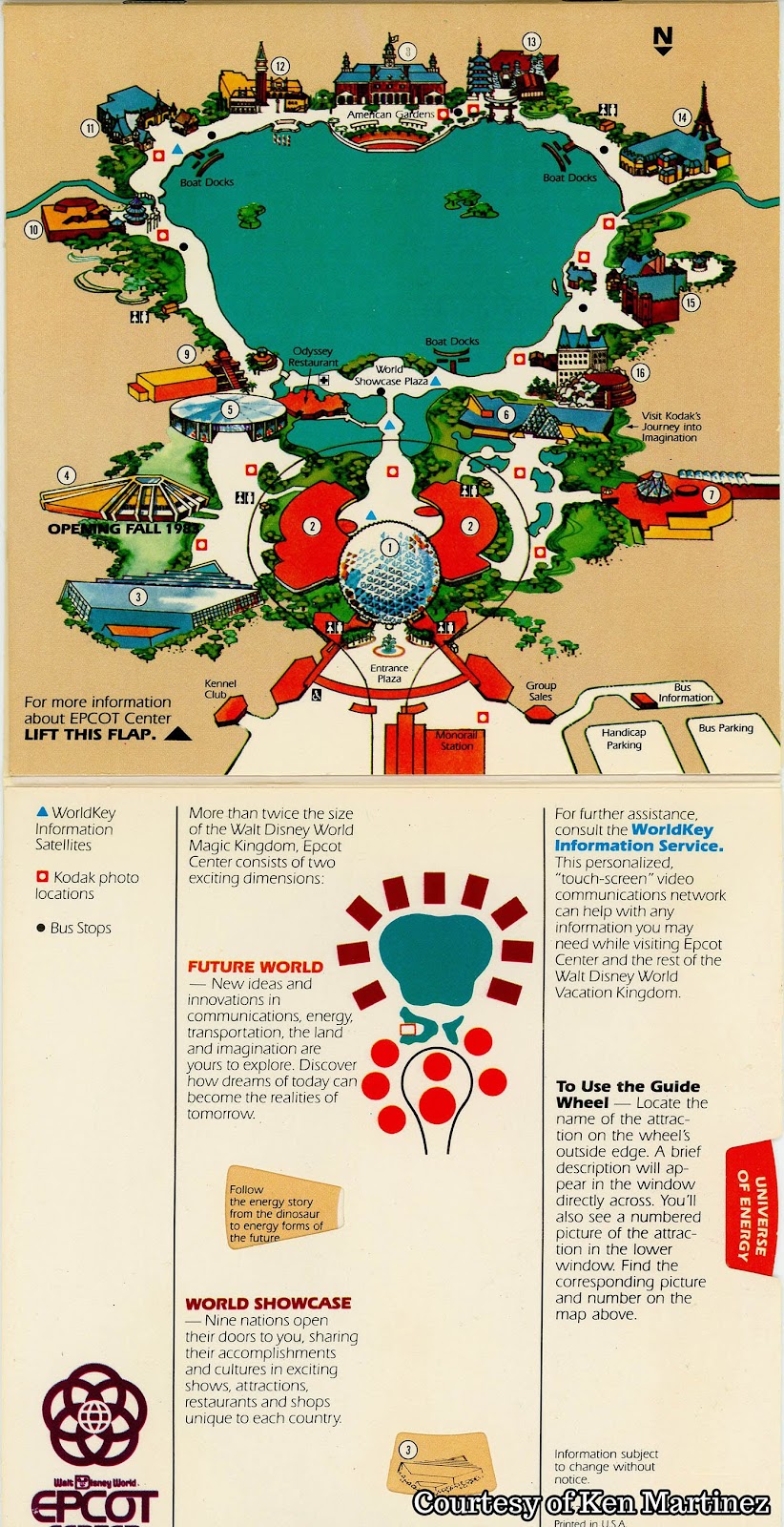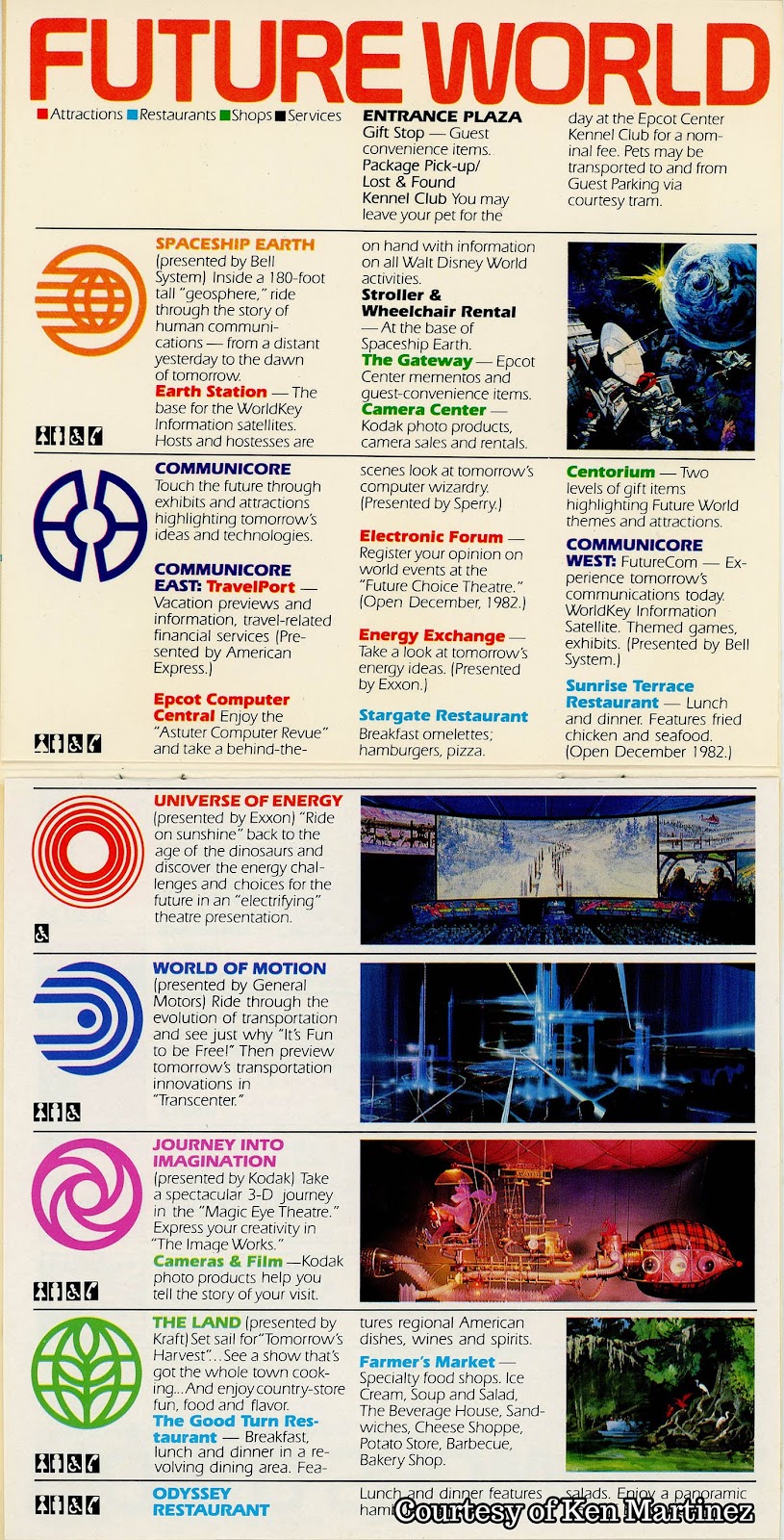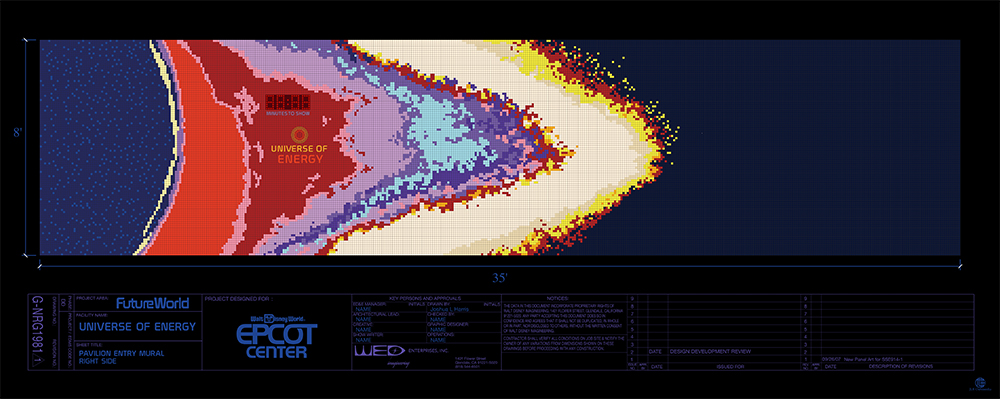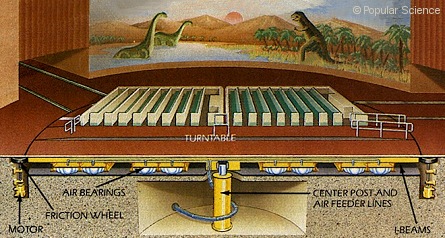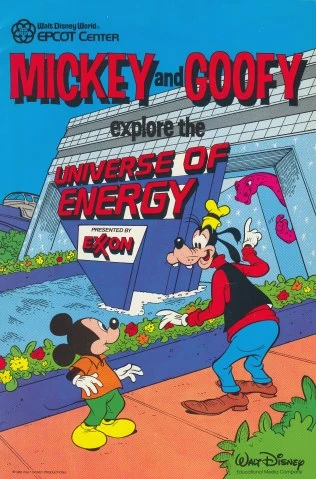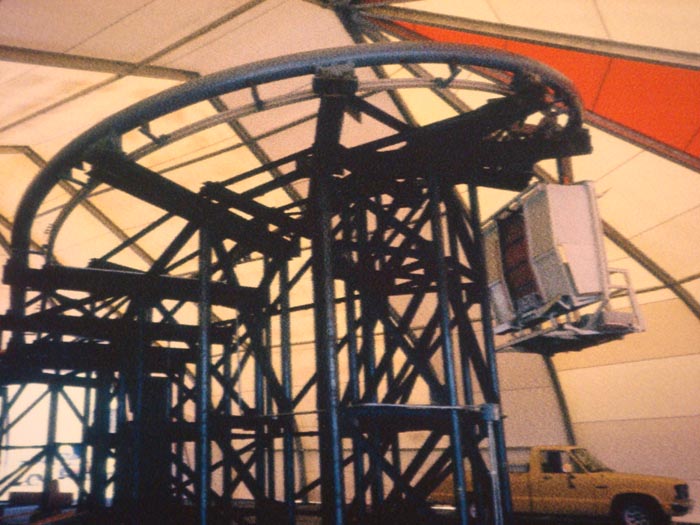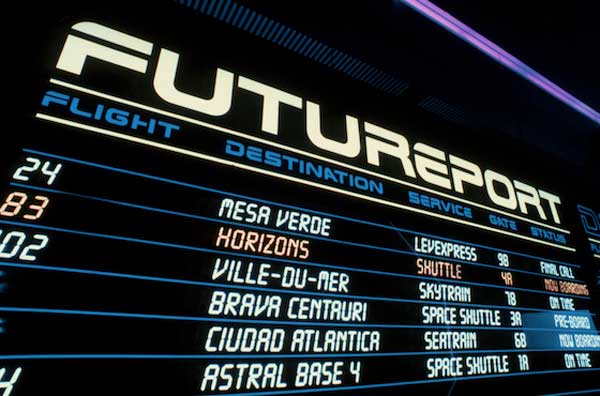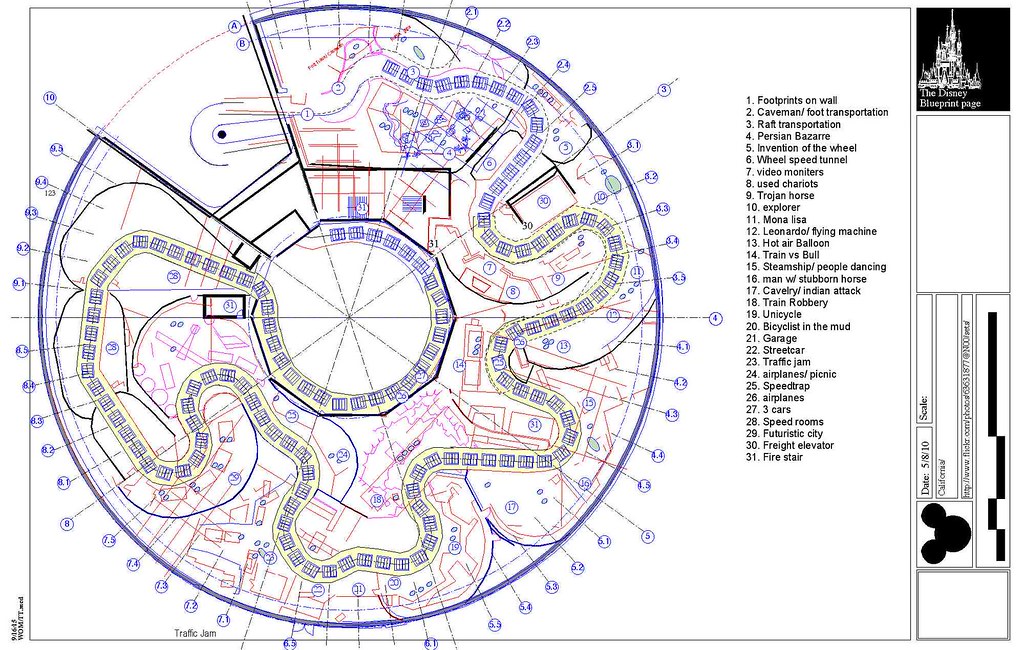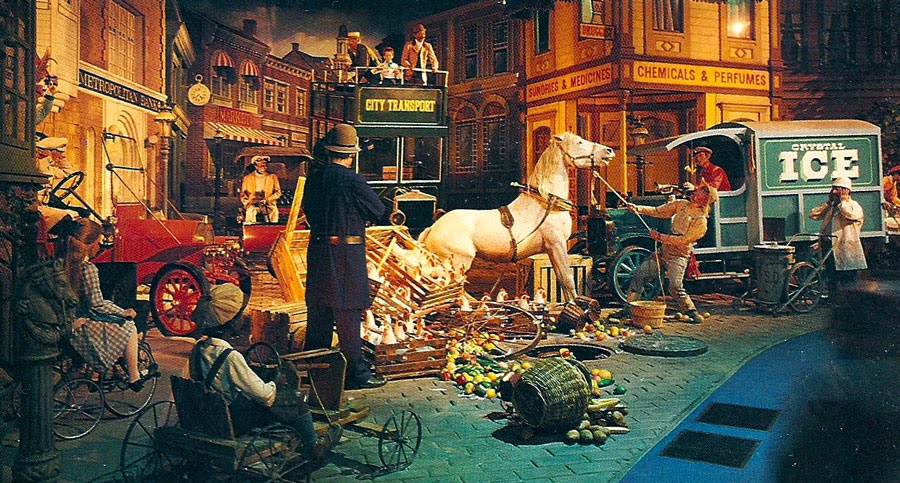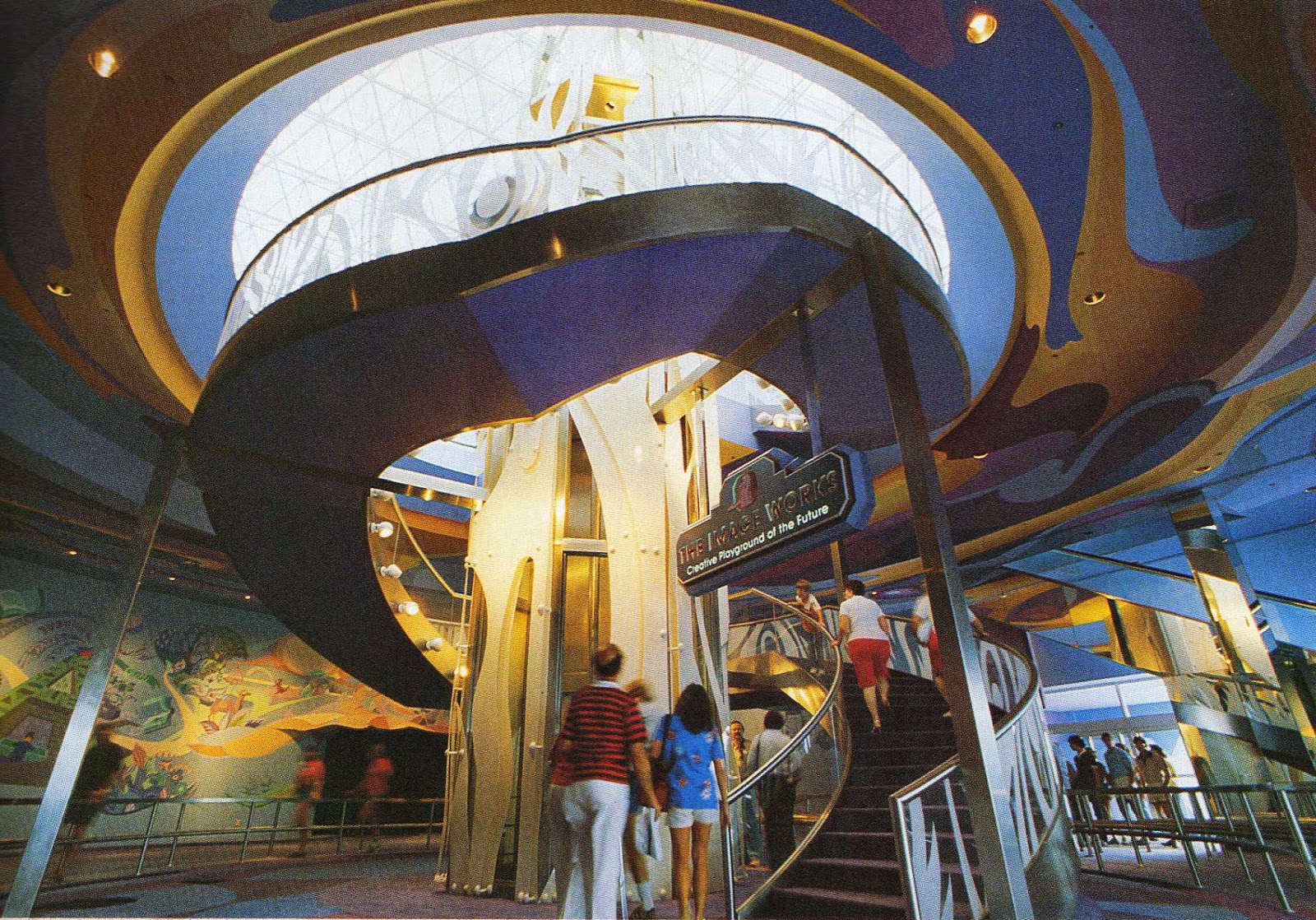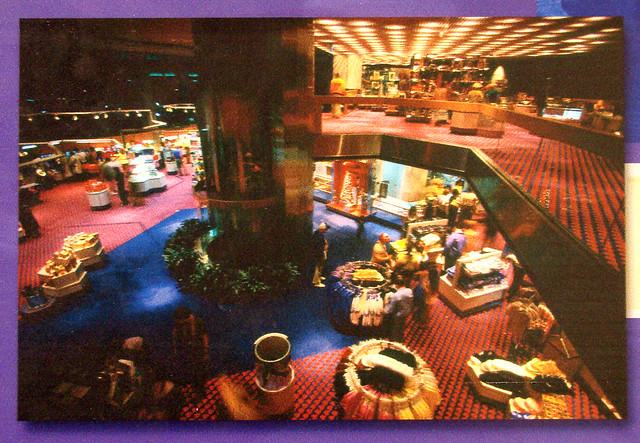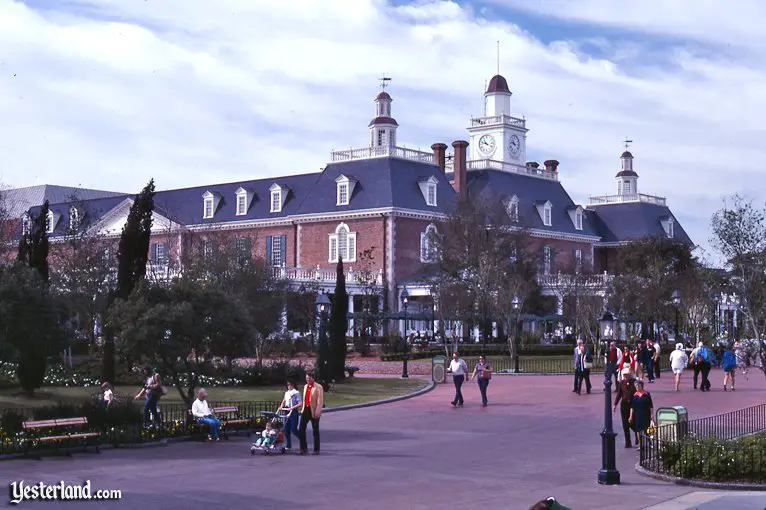COMMUNICORE
Credit: retrowdw.com
EPCOT Center's design was unlike any Disney Park that came before it, because it took ideas that were custom in previous parks, and adapted them to a new enviornment. Typically, 'Magic Kingdom' style parks have a 'main street' that brings guests from the entrance to the center hub and spoke to the various lands. In EPCOT Center, the 'main street' of the park was orangized a bit differently, with a central plaza being flanked by two buildings combining for 100,000 sq feet of space that housed interactive exhibits, restaurants, and shops, all themed around technological advancement. CommuniCore was born.
The two main buildings, CommuniCore West and CommuniCore East, each had a north and south quadrant that were divided by walkways that would take guests from the center plaza to the various pavilions on the West or East side of Future World. Similar to other Disney park 'main street' designs, the central retail location was in CommuniCore, similar to the Emporium on Main Street U.S.A. in the Magic Kingdom. Thus, this layout provided the 'hub' for guests to transition from one side of Future World to the other.
EPCOT Center's vast layout was purposeful, the main goal was not to have buildings stacked near each other similar to the Magic Kingdom parks, but to have the guests have to 'quest' to each area of the park, providing some downtime to take in the experience they just had, and build-up to the next one, through the various archetectual primers described throughout the pavilions in Future World (solar panels on energy, wheel for World of Motion, volcano greenhouse for The Land, and so on)
In CommuniCore, there were various locations the guests could meander through and explore. From extended post-show areas from other Future World attractions, to hands-on interactive games, and even walk-throughs and theater shows, there was plenty of moving parts to this central hub of EPCOT Center.
CommuniCore West
--North Quadrant--
Futurecom
A secondary Spaceship Earth Post-Show exhibit, presented by the Bell System (1982-1984) and then AT&T (1984-) this 9,000 sq foot area housed various communication themed areas for guests to explore. One of the most astounding features when entering is the kinetic sculture; the Fountain of Information, which had a decadent array of communicative devices from newspapers, traffic signs, television, and more.
Also included were the following areas:
- The Intelligent Network: Map display
- Face to Face: video conferencing (ala Skype)
- Computer Displays (formally The Microchip Maze)
- The Family Phone
- The Einsel Theater - large scale kinetic display to showcase the benefits of technology
The Einsel Theater
Interactive Games
-- Lost For Words: Guests guide a mouse through a maze using voice recognition
-- Electric Finger Paint
-- Tele Trivia: fiber optic cables and the history of AT&T
-- Famous Faces: touchscreen; guests identify faces
-- Scramble Faces: showed how computers unscramble data
-- Network Control: Switch calls from overcrowded lines
-- Bit by Bit: Displayed computer memory
-- Phraser: Guest would type and a voice synthesizer would speak it
-- Packet: Guests decode messages by color (Packet switching)
-- AT&T True Vision: Displayed color computer graphics
-- Chip Cruiser: Destroy a virus before it affects a network
Credit: Steve W
EPCOT Outreach
An information center for EPCOT Center and all of the Walt Disney World Resort, available to answer any questions you may have, and had readily available pamphlets of information about the parks and resorts (this was before smart phones).
CommuniCore East
--South Quadrant--
Sunrise Terrace
A counter-service dining location that served a variety of chicken, seafood, salads, and more.
CommuniCore East
--North Quadrant--
EPCOT Computer Central
Credit: retrowdw.com
Sponsored by Sperry-Univac, this locale had both an 'on-stage' and 'backstage' component. The on-stage areas housed various interactive elements including:
- Great American Census Quiz: accurate US population counter
- Get Set Jet: Computer controlled motions game
- Manufacturing Game and 'Putting it all Together': Tech exhibits
- Compute-a-Coaster: allowed guests to design their own 3-D roller coaster and watch a ride-through once it was complete.
- SMRT-1: An interactive robot that played voice-activated guessing games.
Backstage, guests could travel in a walk-through attraction called the Astuter Computer Revue, which was a backstage tour through EPCOT's Computer hubs which ran the park. The Computer Song, by The Sherman Brothers, was the attraction's theme, however this walk-through attraction was short-lived.
Credit: WDWFacts
In fact, The Astuter Computer Revue is the shortest lived attraction in EPCOT Center history, from 1982-1984. On February 6, 1984, the attraction reopened as 'Backstage Magic'which had a new host and theme, but with a similar premise of walking backstage.
Sponsored by American Express, this exhibit space served more than 1,700 guests per day during its first few years of operation. Touch screen areas allowed guests to view and explore vacation destinations around the world. Dubbed 'Destination Terminals' we may take touch screens for granted now, but in the early 1980s, that was extremely advanced. The travel sphere in the center of the exhibit tied everything together.
Sponsored by Exxon, this was the post-show exhibit area for the Universe of Energy, only a stone's throw away from the attraction's exit. This 14,000 sq foot exhibit space housed various interactive areas to learn more about alternative energy and fuel sources. The comic Mickey and Goofy also transitioned into the exhibit area.
Areas included:
- Kinetic Energy Sculpture
- Wind and Solar
- Hand Photo-voltaic Generators
- Wind Turbine
- Nuclear Energy
- Radiation Detection
- Oil and Gas
- Coal Bucket
- Synthetic Fuels
- Biomass
- Energy Pedaling
- Neon House and Home Energy Conservation
- The Taxi Game, drive around using as little fuel to get to your destination
- 32 Energy Access Touch Screen locations.
Stargate Restaurant
An Americana restaurant located near a pond in the center of CommuniCore. The restaurant also contained Beverage Base, which was a small snack area for guests.
CommuniCore East
--South Quadrant--
Centorium
A 13,000 sq foot 2-floor retail shop. The first floor sold mostly theme park gear while the second floor delved into more unique technology gadgets such as watches and electronics.
Electronic Forum
One of the most unique areas in all of CommuniCore and Walt Disney World in general, this exhibit housed live news feeds from around the world in the areas of sports, business, weather, and current events. Two sattellite dishes on a hill outside the building provided the feeds into the exhibit. The main concept though for the exhibit was after guests watched the news and events in the waiting area, they would be funneled into a 175 seat 'Future Choice' theater to answer poll questions on important topics of the age. The polling was embedded into the seats, which again, might seem like commonplace today, but back in 1982, this was state of the art technology, as results from the polls would show up on the main theater screen in real-time.
Summary
--CommuniCore--
Theme: Technological Advancement
Sponsors: Sperry-Univac, American Express, Exxon, Bell System (1982-1984) AT&T (1984-)
Opening Date: October 1, 1982
Theme Song: The Computer Song (1982-1984)
Exhibit Total Size: 100,000 sq feet
Main Exhibits: 5
Restaurants: 2
Main Shops: 1





